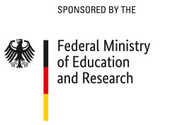The goal of the openSCENE project is in the area of generating critical scenarios for the subsequent evaluation and certification of autonomous vehicles. A well-known problem for autonomous driving is especially traffic in cities, as buildings have a certain geometry and complexity that could, for example, lead to pedestrian areas located behind pillars unsettling drivers. In this case, pedestrians would be partially or completely obscured during vehicle movement. Even with a very simple road layout, such as a well-defined zebra crossing area and visible traffic signs, such a situation could lead to a critical scenario and possible injuries from both sides.
In the openSCENE project, a tool chain is designed that is able to automatically reconstruct highly realistic copies of buildings in 3D formats (mesh objects) using AI methods and unstructured point cloud (PCD) data as the only input. Furthermore, an extension is introduced, namely the generation of unseen 3D models of buildings with a manually defined level of architectural similarity. The project aims to complete the concept of the digital reality cycle for the generation of critical scenarios, which is essential for the assessment and certification of autonomous vehicles. In doing so, both the dynamic and the static elements of the simulated environment are assigned an equally valuable role in the generation of critical scenarios.
Further areas of application would be, for example, in the games industry in the generation of 3D models of varying complexity (different levels of detail, further levels of detail); in 3D navigation systems for more intuitive visualisation of the map by feeding in 3D building models; in urban planning and/or architecture, where precision is important, the generated models can be used for the measurement of complex building sections, e.g. to an accuracy of a few millimetres.
Partners
Huawei Technologies Düsseldorf GmbH, Faro Technologies GmbH

